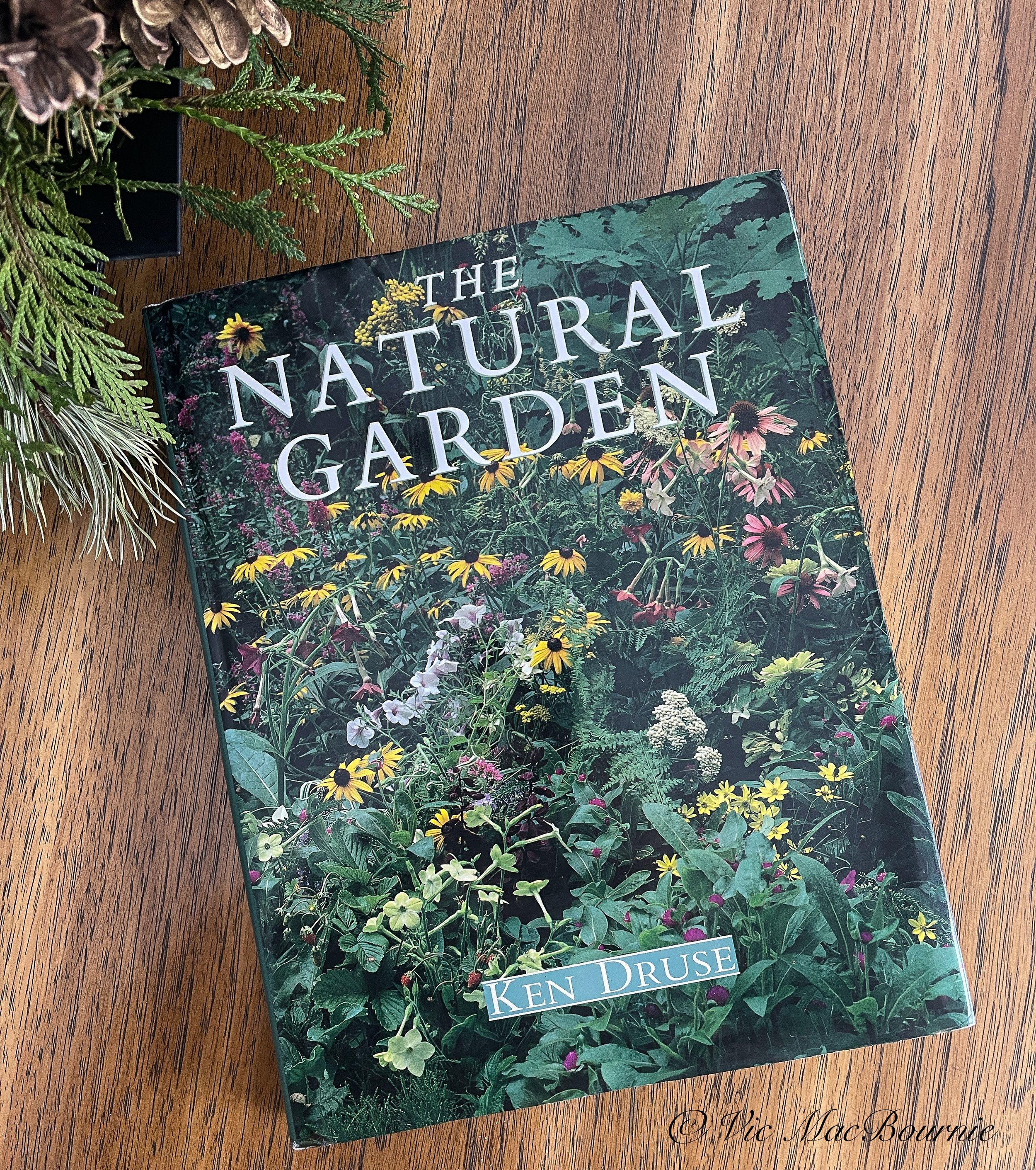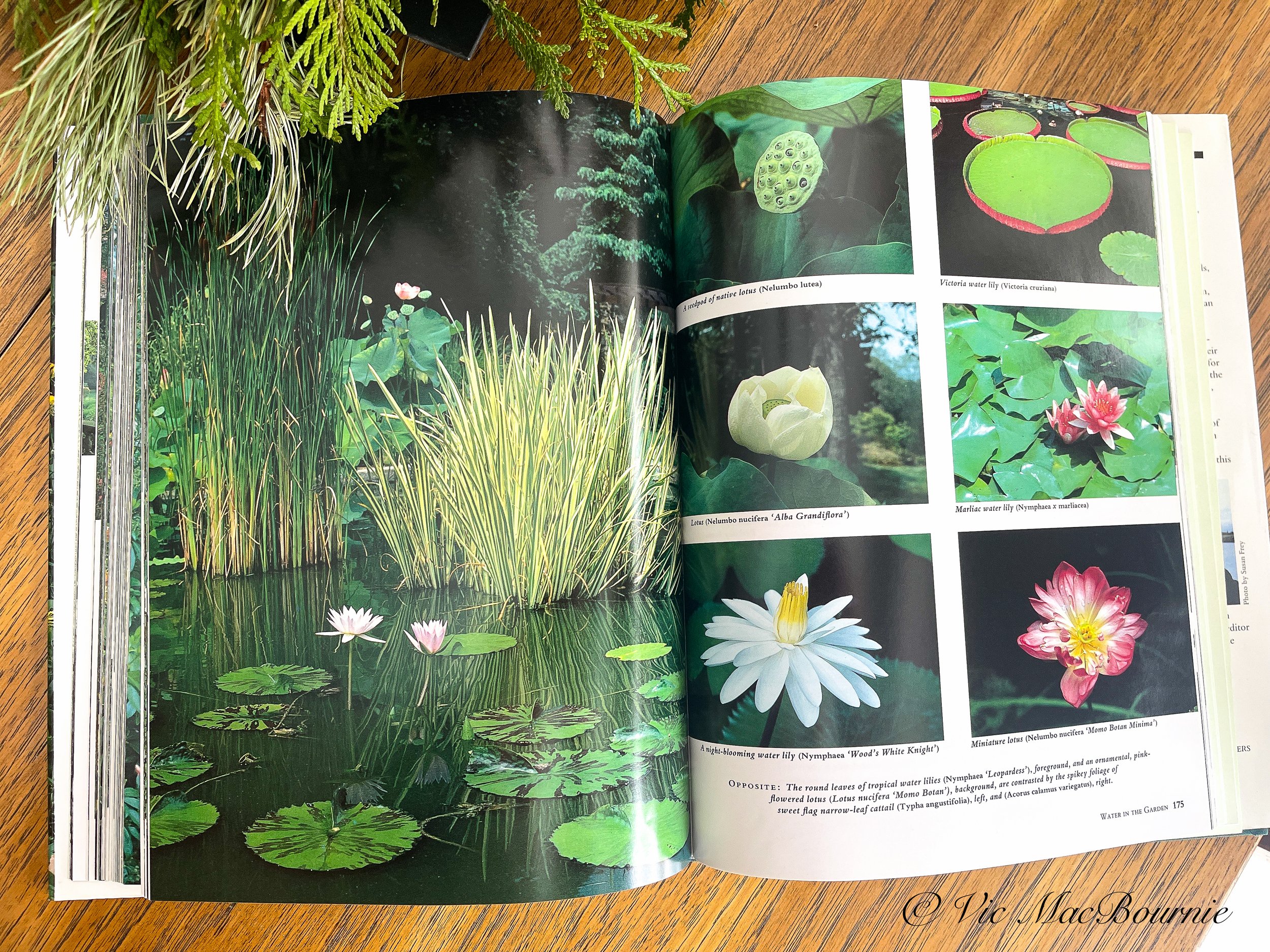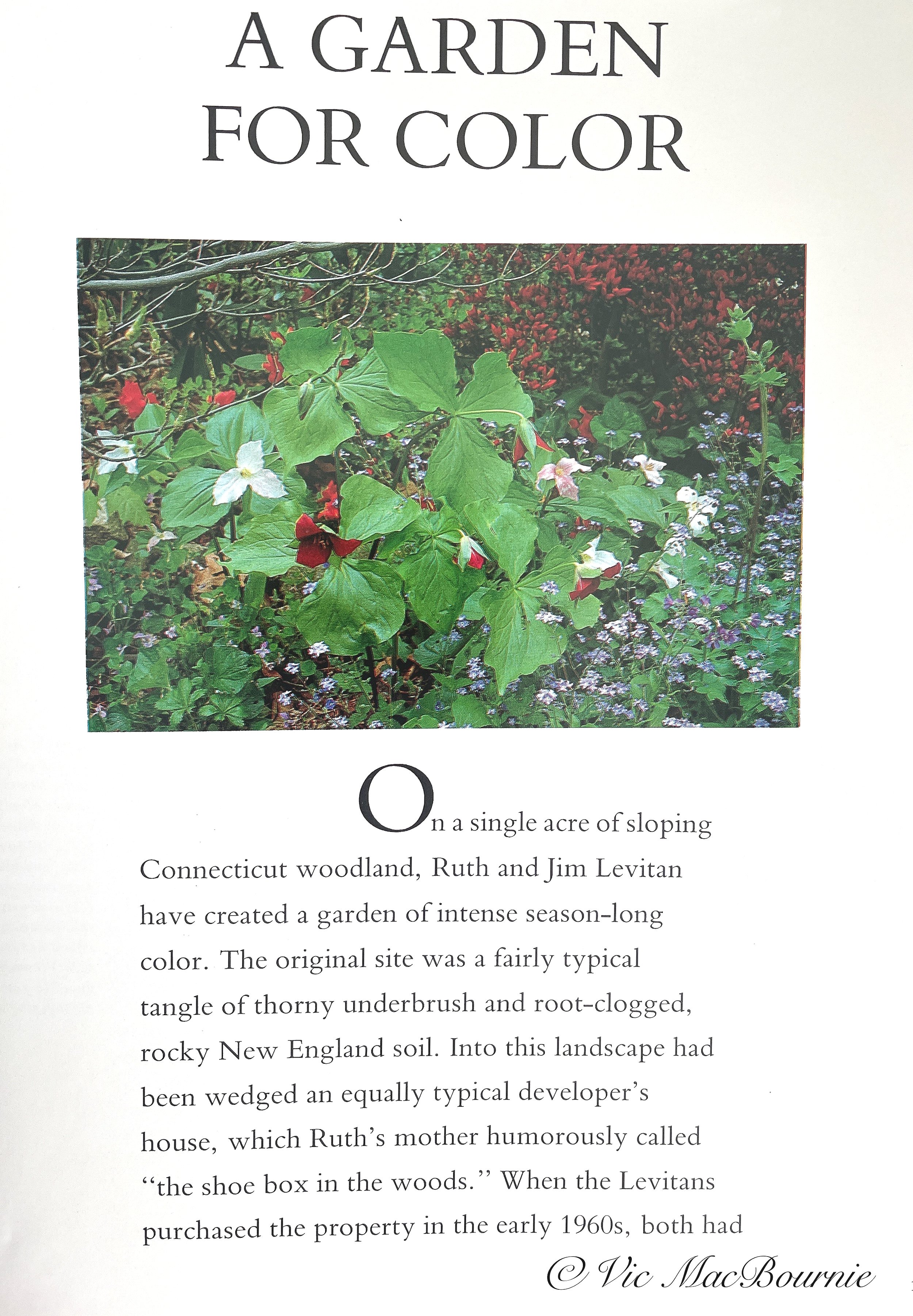A Natural Garden: Bringing nature back to the landscape
Is the Natural garden a growing trend?
Call it a woodland garden, a shade garden, maybe even a meadow garden – if it has a natural feel to it and is based on more native than imported and hybrid plants – chances are you are one of the many who are choosing the Natural Garden over the traditional garden style.
In his groundbreaking 1989 garden book, The Natural Garden, author Ken Druse introduces readers to what he calls the New American Landscape. Back in the 1980s, a natural garden certainly was not the norm.
Even today, most landscapes are typically dominated by large swaths of grass with tiny gardens hugging the foundation and maybe a lone tree trying its best to survive surrounded in a sea of grass.
More on eliminating grass in our landscapes in my earlier story.
Go to my earlier pot on the difficulties a lone tree in the landscape faces .
But A Natural Garden helped change the minds of enough North American gardeners that the concept of moving to a more natural stylized garden began to take shape. That concept is still struggling to take root in subdivisions all over the United States and Canada, but the onslaught of climate change, the decline of native plants and resulting birds and pollinators are forcing us to look at our garden practises in a new way.
I’ll never forget my first introduction to the book and the concept of natural gardening.
For more gardening books by Ken Druse, check out Amazon’s listings.
At the time I was putting together several Home and Garden supplements for the daily newspaper I worked at, and one of the owners of the local landscaping companies told me that his main source of inspiration was The Natural Landscape by Ken Druse.
I remember the cover was a combination of Black Eyed Susans and Purple Coneflower growing wild among Nicotiana and other plants. (see above)
It looked and felt natural. There was no single specimen plant sitting all by itself surrounded by dirt or mulch. There was no grass. The fact I loved Black Eyed Susans and Coneflowers sold me instantly.
Landscaper Koos, yes he was Dutch, was obviously ahead of his time. When he offered to take me around to some of the properties his landscaping company had worked on, I jumped at the opportunity.
This was before Instagram, Facebook and Twitter bombarded us with beautiful images of garden designs, and, to say I was blown away would be an understatement.
I will never forget going into the backyard of a new home with a typically-sized small backyard and being transformed to a northern landscape. Moss-covered, limestone rocks native to the area formed the structure of a waterfalls in one corner of the yard. It was backed by three beautiful 12-foot White Pine trees and formed the focal point of the suburban yard.
I couldn’t believe that a tiny backyard in the middle of a new subdivision could take on the look of being in a forest glade surrounded by native pine trees.
It wasn’t just the natural look that was inspirational, it was the combination of the sound of the moving water and the woodsy smells rising up from the earth and the pine trees. I was transported to northern Ontario’s Algonquin Park, where I spent time most summers immersed in nature.
That was an eye-awakening experience for me and one that I have never forgot on my journey to create our own woodland garden.
Although his book The Natural Garden played an instrumental role in shaping my concept of gardening, it wasn’t until recently – more than 30 years later – that I actually purchased the book. (It was not an inexpensive book in its day and although I do remember getting it out of the library at least once, I had never actually purchased it. That was before I discovered a mint copy on Alibris (used book seller) for only a few dollars – less than $4 to be exact. See image link below of The Natural Shade Garden for a similar price from Alibris. In addition, Alibris has The Natural Habitat Garden – a follow up book – used for a great price.)
I’m now a proud owner.
Is it as groundbreaking today as it was when it was first published?
There is no question that some of the plants suggested in the book would not sit well with native plant purists today, but the basic concept of the book is as fresh today as it was in 1989.
Let’s dig in a little deeper into this 296-page garden treasure.
The Natural Garden opens up by describing the author’s approach explaining that: “Essentially, the Natural Garden is a garden planted with species that are natural to their environments, species that would grow wild. Plants are chosen with an entire year, or years, in mind – they are not expected to work for just one season – and the garden design makes use of long-lasting natural materials. Thus the garden is beautiful year-round as well as being easy to maintain. Lawn is reduced to the minimum needed for recreation.”
A perfect description of what many of today’s natural/woodland gardeners are striving for in the their gardens today.
Druse writes about using nature as the primary source of inspiration while at the same time acknowledging that most of the true natural wilderness has almost disappeared.
“Think of wilderness simply as those places where plants grow unattended: California coastal highway meadows, Rocky Mountain glens of aspen, New England Woodlands, southwestern deserts, perhaps even the vacant lot at the end of your street.”
Druse goes on to say that the first step of any natural gardener should be to take a walk in nearby wild places and carefully noting what is growing naturally in the area. This inspiration should be the starting point in your pathway to your own natural garden.
Check out my earlier post on using natural areas as inspiration.
In his book, Druse offers a portfolio of natural gardens starting with an outstanding example of a New England woodland garden highlighted by Flowering dogwoods (Cornus florida) forming the understory with trilliums, Jack-in-the-pulpit (Arisaema atrorubens), Forget-me-nots (Myosotis alpestris) combining in an impressive riot of colour that manages to combine the beauty of a woodland garden with a hint of an English border garden in the sunnier areas.
It’s not just vast woodland gardens that can get a taste of a more natural style of gardening. The Natural Garden explores a small garden in a big city providing tips on how to fill the space in a small garden with native plants, grasses and vines to maximize the space.
A seaside garden making use of ornamental grasses, a more natural English cottage garden and a California cliffside garden give readers a taste of how varied a natural-style garden can be and introduces them to the elements of garden design.
Five design elements for the natural garden
The Natural Garden focuses on how plants form the foundation of the design rather than paving, steps and walls made of hard-surface materials often associated with today’s traditional gardens.
1) Ground covers as the foundational design element. While lawns can’t be ignored. The Natural Garden prefers to focus on lawn aternatives that still rely on living ground covers. Native plants such as wild ginger, native mosses, ferns and even something like low-growing blueberry bushes can work in the right stiuations.
So too will wooly thyme, astilbe, and epimediums, just to name a few that have found their way into my garden. Druse also suggests a couple of plants that have long been used as ground covers but are not recommended today because of their invasive tendancies in certain growing zones, periwinkle (Vinca minor).
It’s important to do some research into plants – especially aggressive ground covers – before planting them.
For more on groundcovers in the woodland gardens, check out my posts here: Three great groundcovers for the woodland garden; Snow: Perfect groundcover for hot sunny areas; Three mosses for woodland groundcovers
2) Bulbs as early spring design elements: Bulbs are our spring time stars in the garden starting with snowdrops (Galanthus nivalis), Daffodils and tulips, but other bulbs can be used that put on their shows later in the season right through to fall. It’s important, however, not to plants them in straight rows. It’s much better to naturalize them in the garden beds or even in your grass and in with other groundcovers, letting them rise up in clumps in random areas of the garden.
Only bulbs that have the ability to spread and multiply can be naturalized; therefore, hybrid tulips do not work well. “Naturalized planting of bulbs, once established, are nearly maintenance free,” writes Druse.
A few to consider include: spring crocuses, dog-tooth violet (Erythronium dens-canis), grape hyacinths (Muscari) wood hyacinths ((Endymion hispanicus), Wind flower (Anemone blanda) and Ornamental onion (Allium giganteum). Lilies to consider include Canada lily (Lilium canadense) and Turk’s-cap lily (Lilium tigrinum) and tiger lily (Lilium tigrinum).
3) Perennials: While The Natural Garden does not focus entirely on natives, it’s a good idea to include only native plants when we are planting perennials in today’s gardens. That’s not to say we can’t enjoy what we have in our existing gardens providing they are not considered invasive. Plant that hybrid perennial if you want, but be sure to include the native species too to ensure insects and birds also find our gardens welcoming.
4) Ornamental grasses: Many modern gardeners might think ornamental grasses are a new trend in garden designs but The Natural Garden includes them as a key elements in the design process. For more on using ornamental grasses in the natural/woodland garden, be sure to check out my post here: Three ornamental grasses for the woodland garden
5) Vines in the garden design: Don’t overlook the value of vines to create texture and vertical cover in your garden, especially if it’s a small space. The Natural Garden describes vines as “something extra, a luxurious accessory” if you will. “While ground covers, or trees, or shrubs have practical uses, vines are more purely ornamental. Like necklaces, lace, icing, or gingerbread molding, they provide the perfect finishing touch,” Druse writes.
I’m not sure I agree with that conclusion, knowing that vines can provide needed habitat for birds as well as fall and winter fruit. Some like honeysuckles will attract hummingbirds, moths and butterflies as well as pollinators and other desirable insects and spiders.
But there is no question that they can add real beauty to a garden whether they are purely for looks or offer more to our wildlife. Once again, look for native vines to include in your landscape. Virginia Creeper is a great vine that has earned a spot in our garden and provides birds with berries in winter and late fall. Annual morning glories are also a staple in our garden,
The Natural Garden and why it’s more important than ever
As I wrote earlier, I am now the proud owner of Ken Druse’s book, The Natural Garden. I only wish I bought it back in the early ‘90s when the gardening bug first bit me. But, the beauty of gardening is that it’s never too late – never too late to plant the tree you always wanted, your favourite perennial or native wildflower.
Today, The Natural Garden is a little dated in some of its suggestions, but it’s also inspirational, especially in the middle of winter when the snow is falling outside and we need to dream about spring and the many projects we have planned.
Pull out the garden guides, the seed catalogues and our garden journals, but first get your hands on The Natural Garden and get inspired.
Heck, maybe for the price of a couple seed packets, you can find a mint copy of the book that changed my life and maybe yours too.




